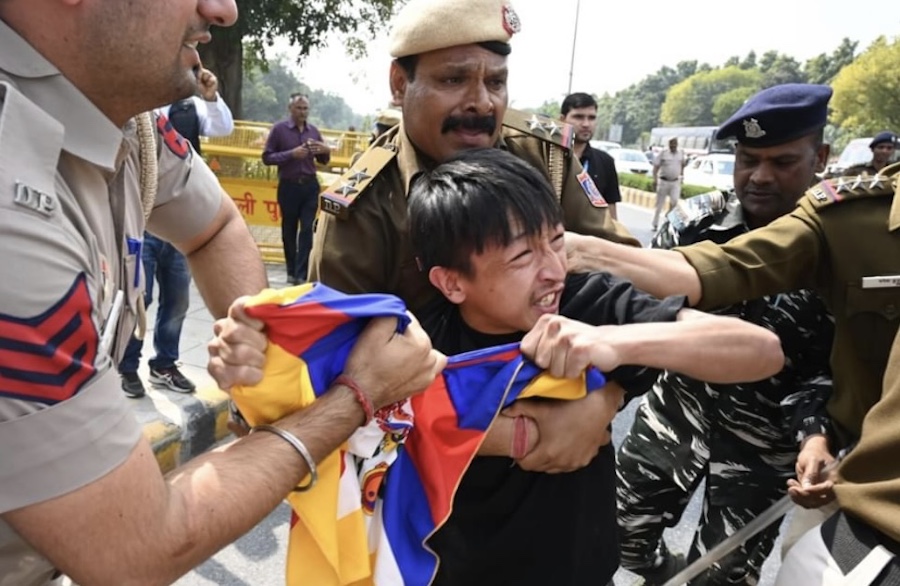By — Shyamal Sinha
Tibetan activists from Students for a Free Tibet (SFT), National Democratic Party of Tibet (NDPT) and Tibetan Youth Congress (TYC) staged a protest at the Chinese Embassy in New Delhi against Chinese Foreign Minister Qin Gang’s visit to India on Thursday. Mr. Qin will attend the G20 Foreign Ministers’ meeting in New Delhi on March 2 at the invitation of India’s External Affairs Minister S. Jaishankar, a statement from the Foreign Ministry read. This will be Qin’s first visit to India after he succeeded foreign minister and State Councillor, Wang Yi in December last year.
The protesters shouted slogans, “Qin Gang Go Back!” and “G20 Protect Tibetan Children”. police detained the protestors, but were later released. The activists condemned the Chinese Communist Party’s policy of sinicization that enforced nearly 1.2 million Tibetan children in colonial boarding schools in occupied Tibet by separating them from their families at the age of just four or five. The rights group also called out G20 leaders around the world to protect the millions of Tibetan children forced into these colonial boarding schools and are stripped of their identity to learn Mandarin and the Chinese way of life.
Meanwhile, banners and posters calling out Mr. Qin and G20 leaders have been torn and taken down around the Indian capital, to which Students for a Free Tibet (SFT) responded by saying, “this shows the insecurity level of CCP China and also the suppression of freedom of speech of Tibetans in a free country,” on their social media handle. “China should be held accountable for all the atrocities and human rights violations in Tibet and other occupied countries,” they added.
Mr. Qin’s visit to the G20 meeting marks the first high-level leadership visit from China to India since March 2022. Since early 2022, bilateral exchange between the two sides was stalled following tensions along the Line of Actual Control (LAC) and China’s mobilisation of troops at the friction areas.













